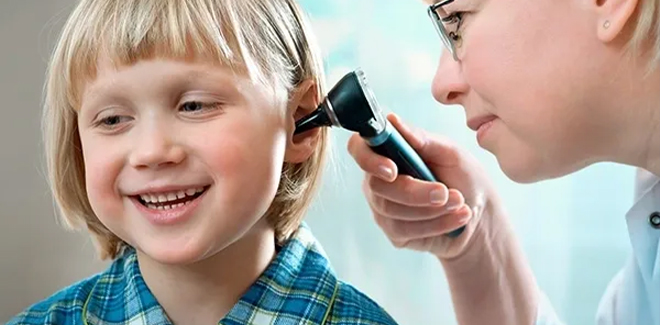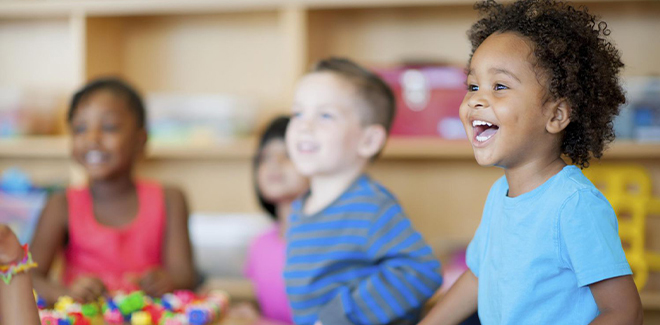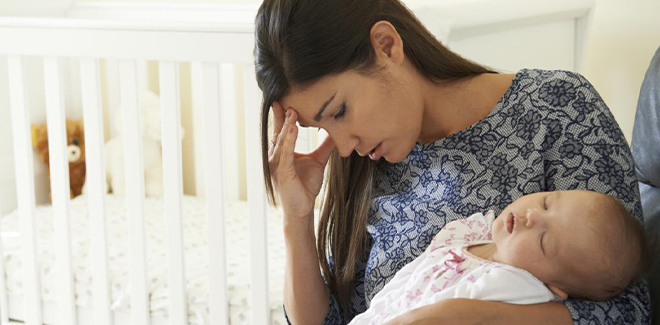In the early stages of life, Children’s Hearings is extremely sensitive and they are especially attuned to the voices of their caregivers. This sensitivity is necessary for the development of speech and language skills. Through interactions with parents and caregivers, children learn to distinguish between different sounds, which is an important step in their language acquisition process.
Children’s hearing is critical not only for language development but also for safety. Hearing helps children become aware of their environment and react to potential dangers such as oncoming vehicles or alarms. This aspect of the auditory system is critical to their physical health and allows them to safely engage with the world.
Unfortunately,Children’s Hearings can be affected by a variety of factors, including exposure to loud noises, ear infections, and genetic predispositions. Regular hearing screening is essential to detect and resolve hearing problems in time, as timely intervention can greatly improve a child’s quality of life and learning abilities.
As a result, children’s hearing is a significant and delicate part of their auditory system. It underpins their language development, safety and overall understanding of the world. Parents, caregivers, and health care professionals must be vigilant in monitoring and protectingChildren’s Hearings to ensure that they have every opportunity to thrive and communicate effectively.
Parenting is a complex path and at the same time very enjoyable, but parents should take a step towards their child’s growth with a broad vision. Children need care and this is the duty of their parents.

Hearing tests for children
Ear emission test (OAE): This is a non-invasive test that is often used for infants and toddlers. A small probe is placed in the ear and measures the sounds the ear produces in response to auditory stimuli. OAE tests are effective in diagnosing inner ear problems.
Auditory Brainstem Response (ABR) test: ABR tests are performed on infants, children, and even adults. Electrodes are attached to the child’s scalp and the test measures the electrical activity of the auditory nerve and brainstem in response to sound. It can help identify problems in the auditory pathway.
Pure-Tone Audiometry: This test is suitable for older children who can follow directions. Children use headphones and listen to soft sounds at different frequencies. This helps determine their hearing threshold and is essential to identify the degree and nature of the hearing loss.
Speech audiometry: This test evaluates the child’s ability to understand and repeat words or phrases at different sound levels. It provides valuable information about speech perception abilities and their discrimination.
Audiometry Game: The audiometry game design for younger children turns the hearing test into a game. Children are encouraged to perform actions or tasks by hearing a voice, making this a more interactive and child-friendly experience.
Behavioral Observational Audiometry: Usually used for very young children or infants, this test relies on observing the child’s response to sound. The audiologist may use visual cues such as head turns or facial expressions to gauge the child’s response to auditory stimuli.
Tympanometry: Tympanometry measures the movement of the eardrum in response to changes in air pressure. This helps identify middle ear problems such as fluid buildup or eustachian tube problems.
Regular hearing tests for children are essential for early detection of problems such as hearing loss, ear infections, or other hearing problems. Early diagnosis and intervention can greatly improve a child’s communication skills, academic performance, and overall quality of life. It is important for parents, caregivers, and health care professionals to work together to ensure that children receive appropriate hearing evaluations based on age and developmental stage.
Why hearing tests are important
Hearing tests are important for several important reasons:
Early detection of hearing problems: Hearing tests can detect hearing problems even in the early stages. This is especially important for infants and children, as early detection and intervention can prevent or minimize the negative impact of hearing loss on language development, academic performance, and social interactions.
Language development: Hearing is essential for language development. Babies and young children learn to speak and understand language by listening to the conversations of those around them. If hearing problems go undiagnosed, they can lead to delays in speech and language development, which may have long-term consequences for a child’s academic and social development.
Academic success: Listening is an integral part of learning. Children with undiagnosed hearing problems may struggle in school due to problems understanding lessons, following directions, and participating in class discussions. Early identification and management of hearing problems can significantly improve a child’s academic success.
Social and emotional well-being: hearing plays an essential role in the child’s interactions and social development and emotional development. Children with hearing problems may experience social isolation, frustration, or low self-esteem because they may have difficulty communicating effectively with peers and adults. Recognizing and addressing these issues in time can help children build healthy social relationships and boost self-confidence.
Safety: Hearing is essential to safety, as it allows people to be aware of their surroundings and react to potential hazards. In children, this includes hearing alerts such as sirens, alarms, or approaching vehicles. Undiagnosed hearing problems can put children at risk in a variety of situations.
Quality of life: Hearing tests can improve a child’s overall quality of life. By identifying and addressing hearing problems, children can fully engage with their environment, communicate effectively with others, and participate in activities and experiences that might otherwise be limited.
Prevent the progression of hearing loss: Some hearing problems can get worse over time. Regular hearing tests can help detect changes in a child’s hearing status and enable timely interventions to prevent further deterioration.
Treatment options: If hearing problems are identified, hearing tests are the first step in determining the most appropriate treatment or intervention. This may include hearing aids, cochlear implants, speech therapy, or medical treatment, depending on the nature and severity of the problem.
As a result, hearing tests are essential to ensure children’s optimal development, communication abilities, academic success, and overall well-being. Regular hearing evaluation, especially during critical stages of development, provides an opportunity to identify and address hearing problems early, thus improving the child’s quality of life and future prospects.
When will my child’s hearing be checked?
The timing and frequency of hearing screenings for your child can vary based on several factors, including medical history, risk factors, and any concerns you or your healthcare professional may have. Here’s a general guideline for when your Children’s Hearings might be checked:
Newborn hearing screening: In many countries, newborns undergo hearing screening immediately after birth. This is usually done before the baby leaves the hospital. Its goal is early detection of significant hearing problems such as congenital hearing loss. If concerns arise during this screening, further testing may be recommended.
Early infancy: Even if your child passes the newborn hearing screening, it is good practice to evaluate his hearing at various stages of infancy. Some health care providers recommend a hearing test at around 6 months of age and then again at around 1 year of age.
Preschool and School Age: As your child gets older, periodic hearing evaluations may continue, especially before they enter school or during regular well-child exams. These screenings can help ensure that any hearing problems are detected and treated early before they affect language development and learning.
Risk factors: Children with certain risk factors, such as a family history of hearing loss, frequent ear infections, or developmental delays, may need more frequent and more careful hearing evaluations. These evaluations may occur more often and in the early stages of development.
Concerns or symptoms: If you, your child’s caregivers, or health care providers notice signs or symptoms of hearing problems, it is important to seek a hearing test promptly. These symptoms may include delayed speech and language development, difficulty following directions, or a child’s limited response to sounds.
Routine examinations: In addition to the specific times mentioned above, it is good practice to use hearing evaluations as part of a child’s routine examination, especially in the early years of a child’s life. Regular monitoring ensures that any changes in hearing can be detected quickly.
Remember that every child is unique and the timing of hearing tests may vary based on individual circumstances. It is important to communicate with your child’s health care provider and follow their recommendations for a hearing evaluation. If at any time you have concerns about your Children’s Hearings, don’t hesitate to talk to your child’s health care team. Early detection and intervention are key to addressing hearing problems and providing the best support for your child’s development.

What happens in a Children’s Hearings?
Pediatric hearing or hearing testing for children is a process designed to assess a child’s ability to hear and detect any potential hearing problems. Here’s what usually happens during a Children’s Hearings test:
1- Preparation: A parent or caregiver usually accompanies the child to provide comfort and support. Creating a calm and friendly environment is essential to minimize any anxiety the child may have about the test.
2- Introduction and explanation: The audiologist or audiometric specialist introduces himself and explains about the hearing test in a friendly manner. They may use age-appropriate language to help the child understand what is happening.
3- Type of test: The specific type of hearing test depends on the child’s age, developmental stage, and any known or suspected hearing problems. Common tests include acoustic emission (OAE), auditory brainstem response (ABR), pure audiometry, speech audiometry, broadcast audiometry, etc.
4- Testing Equipment: The audiologist will use specialized equipment for the selected test. Depending on the test method, this may include headphones, small probes, electrodes, or other instruments.
5- Test method:
- Ear Acoustic Emission (OAE) and Auditory Brainstem Response (ABR): These tests are often used for newborns. OAE involves inserting a small probe into the ear to measure the ear’s response to sounds. ABR uses electrodes to measure the child’s brain response to auditory stimuli.
- Pure-Tone Audiometry: For older children, this test involves wearing headphones and responding to soft sounds at different frequencies. They may be asked to press a button or raise their hand when they hear a sound.
- Speech audiometry: Children are asked to repeat words or phrases at different volume levels to assess their speech perception and recognition abilities.
- Auditory play: Young children engage in a playful interaction, such as putting a puzzle piece together or putting a ball in a basket while hearing a sound.
- Behavioral Observational Audiometry: For infants and very young children, the audiologist observes the child’s reactions to sounds, such as head turns or facial expressions.
6- Results and recommendations: The audiologist analyzes the test results and shares them with the child’s caregiver. If hearing problems are identified, they explain the nature and severity of the problem and recommend appropriate interventions or further tests.
7- Follow-up and Intervention: Depending on the findings, the child may be referred for further evaluation, including medical treatment, hearing aids, or speech therapy. The goal is to provide the best support and interventions to address hearing problems and promote child development.
Children’s Hearings testing is usually a painless and non-invasive process. This is done by professionals trained and experienced in working with children. The focus is on ensuring the child’s comfort and convenience during the testing process.












